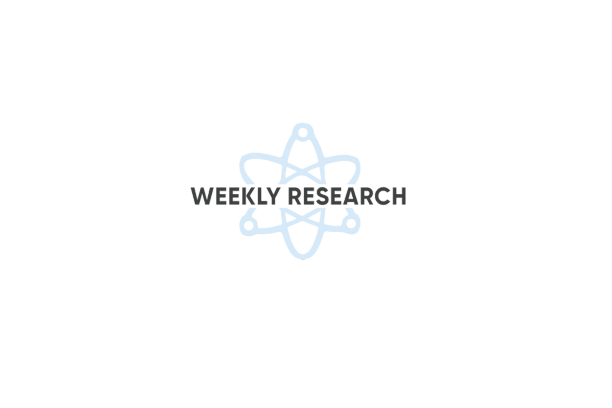This week, we summarize an impactful study on a large-scale remote patient monitoring COVID-19 program for patients following emergency department discharge. Even months after recovering from COVID-19, many patients experience lingering effects known as long COVID, according to the CDC. People who experience long COVID have signs, symptoms, and conditions that continue or develop after acute COVID-19 infection.
What is Long COVID-19?
Studies indicate that a sizable percentage of COVID survivors, particularly those hospitalized during acute infection, report persisting symptoms beyond the 3-month mark. These long COVID symptoms differ between patients and even fluctuate day-to-day within the same patient. Some patients may utilize remote patient monitoring for COVID-19 symptoms, while others do not.
The CDC highlights these key points about Long COVID.
- Severe COVID illness increases long COVID risk, but mild/asymptomatic cases can also lead to lasting effects.
- Unvaccinated individuals may have higher long COVID risk after breakthrough infection compared to vaccinated.
- Reinfections raise the recurring possibility of developing post-COVID conditions.
- Long COVID can occur without a confirmed previous COVID diagnosis, though it often follows a positive test/illness.
- Why some experience persistent complications while others recover remains typically unclear.
- Research is ongoing to understand long-term COVID risk factors and impacts on disproportionately affected groups.
What are the Latest Statistics on Long COVID?
Below is a summary of the key statistics on long-term COVID from the CDC 2023 Household Pulse Survey analysis:
- The prevalence of long COVID among all US adults decreased from 7.5% in June 2022 to 6.0% in June 2023.
- Among adults with prior COVID-19, long COVID prevalence dropped from 18.9% to 11.0% during the same time.
- After an initial decline, long COVID prevalence stabilized in January 2023.
- Only adults under age 60 experienced significant declines in long COVID prevalence.
- In June 2023, 26.4% of adults with long COVID reported significant activity limitations due to their symptoms.
- The prevalence of activity limitations in long COVID patients did not change over the study period.
- Long COVID prevalence tended to be lower among the youngest (18-29 years) and oldest (60+ years) age groups.
Experts advise that better comprehending the oscillating nature of symptoms and pinpointing potential triggers could empower healthcare providers to be more successful in treating long COVID. Likewise, this knowledge may help patients better self-monitor and manage their lingering post-COVID conditions. Remote patient monitoring for COVID management is one solution being used.
Remote Patient Monitoring and COVID-19 Management
Remote patient monitoring tools like at-home RPM devices can benefit long COVID patients. RPM facilitates regular symptom monitoring over time. Tracking of daily health parameters allows providers to identify early warning signs and intervene promptly.
For long COVID patients, RPM can track objective vital signs like blood pressure, heart rate, and oxygen saturation, along with subjective symptoms like fatigue, brain fog, and pain. Detecting concerning trends empowers timely treatment adjustments before severe exacerbations arise. RPM also reduces hospital visits for long COVID patients, optimizing health system resources. Further, RPM enhances patient-provider communication and care coordination. Overall, RPM integration fundamentally improves long COVID outcomes through prompt intervention, resource conservation, and patient-centered support.
Study on Remote Patient Monitoring for COVID-19
Researchers at a large regional health system implemented remote patient monitoring for COVID-19-positive patients discharged from 9 emergency departments (ED). Between December 2020 and August 2021, over 16,000 COVID-19 patients visited the emergency department (ED). Of those discharged home, 41% enrolled in the monitoring program.
Patients received a pulse oximeter and thermometer. They downloaded an app to report oxygen saturation, heart rate, symptoms, and temperature over 16 days of monitoring. Nearly 1,800 patients actively engaged by submitting health data through the app. Engagement was higher among those with Bluetooth-enabled remote patient monitoring devices versus manual data entry.
Study Results: Remote Patient Monitoring for COVID-19
Compared to patients not enrolled in remote monitoring for COVID, the monitored group had a lower 30-day ED return rate – just 6.2% versus 14.9% for the non-monitored group. Nearly half of the monitored patients who did return to the ED were admitted to the hospital, suggesting remote monitoring helped detect deterioration earlier.
This study provides compelling evidence that large-scale remote patient monitoring for COVID-19 patients after ED discharge is feasible and associated with reduced ED returns. The researchers concluded remote monitoring allows earlier identification of worsening illness and enables patients to safely recover at home during the initial, stable phase of COVID-19 infection.
Research shows the advantages of remote monitoring over standard discharge follow-up include capturing concerning vital sign trends and having patients report subjective symptoms in real-time. This enables clinical intervention before acute decompensation happens. As the researchers state, remote monitoring effectively “expands the scope of available ‘clinical space’ beyond the brick-and-mortar constraints of the hospital.”
For more weekly insights into new telemedicine research studies, scroll down now to subscribe to Tenovi’s Weekly Research Round-Up. If you are part of a chronic care management, telehealth, or RPM software and services company, explore Tenovi RPM solutions. Ready to see how Tenovi works in the real world? Request a free demo and discover how simple connected care can be.


